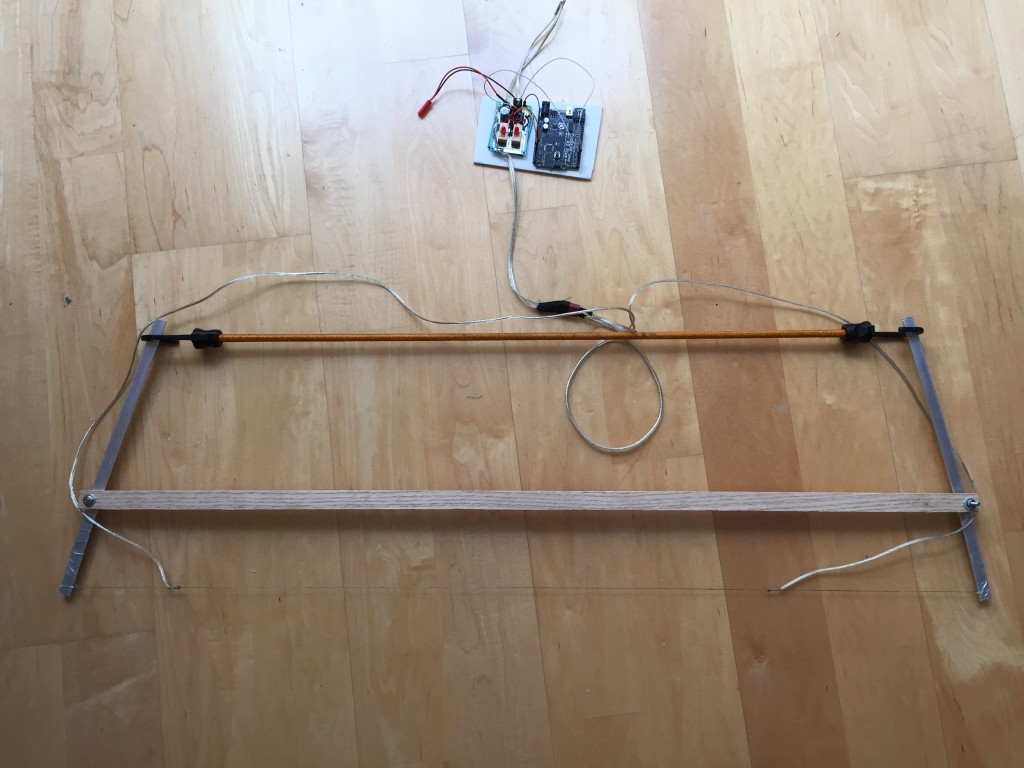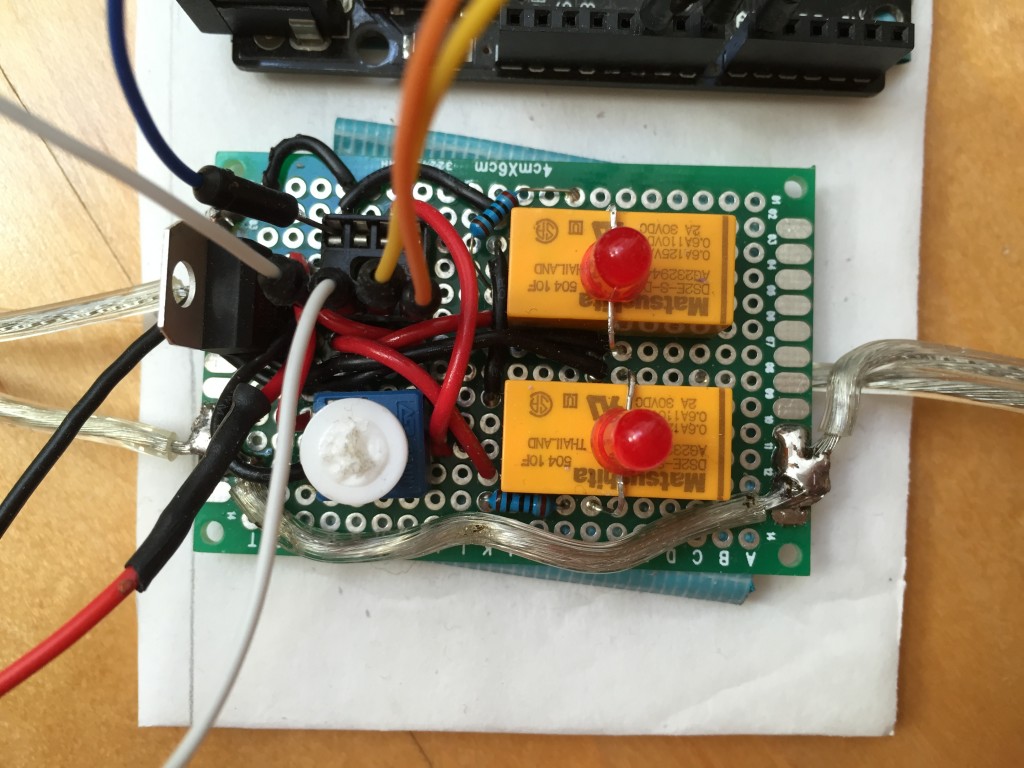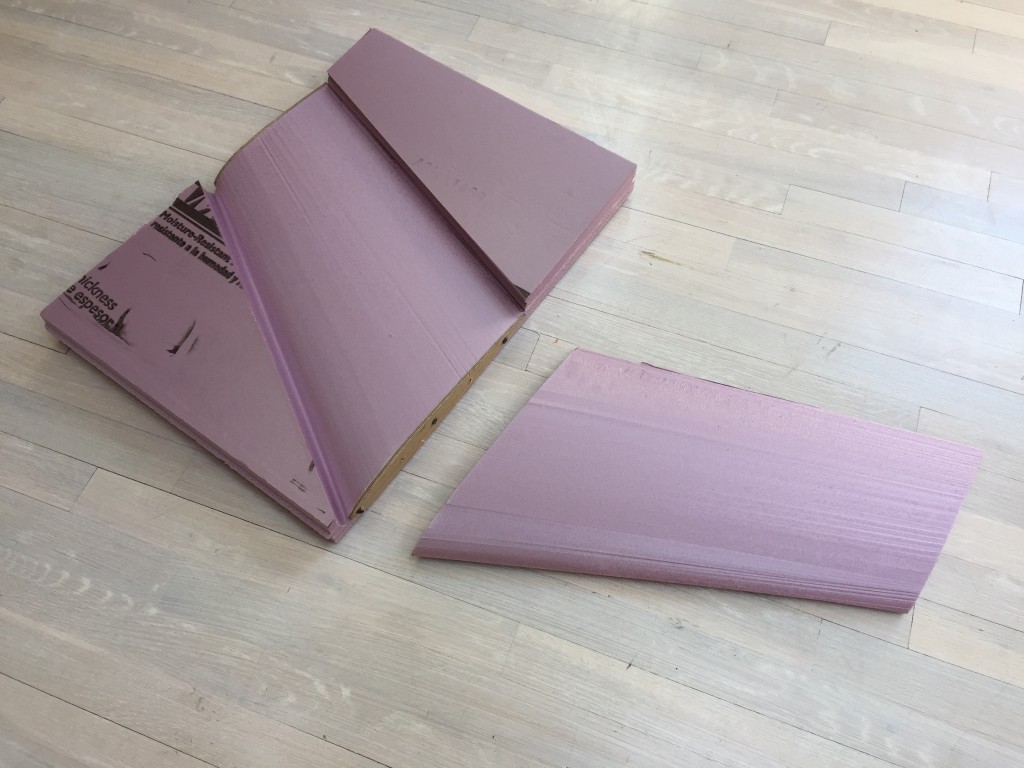This post is coming out of order. I actually built this before building the first prototype, but here it is...
If you’ve ever tried cutting styrofoam with a knife, you’ll probably know it doesn’t really work. Your best bet is to find a really sharp box cutter and hope for the best. This might work for some smaller cuts, but what if you want to carve out an airfoil? A knife’s not gonna cut it (pun intended).
Enter the hot-wire foam cutter. Most foams including XPS melt very easily, so if we can get a hot wire, it should be able to cut through the foam. Heating up a wire is surprisingly easy; all you have to do is run a current through it. Stretch your hot wire tight, e-voila, you’ve got yourself a hot wire foam cutter.
Here’s the one I built:
This particular foam cutter is of the “bow” style. It consists of an H frame with the hot wire across the bottom, and bungee cord across the top to tension the wire. I’ve successfully used a guitar string in the past, but for this application, my wire is nickel-chromium. This works well, because it has an unusually high electrical resistance, and is very strong in tension, so it is unlikely to snap when I heat it up and put it under stress.
Now for the tricky part: generating the current to heat up the wire. You might think this is easy, but short a 9v battery over the wire, and the battery overheats. Try out a 12.6v Lithium Polymer battery, and the wire glows bright orange before snapping from the thermal stress. Use a plug in power supply and sometimes you’ll blow out the transformer, other times you’ll overheat the wire.
Basically, we need a power supply capable of supplying more than enough power, and then some way of limiting that power such that the wire does not overheat. To accomplish this, we can turn the power supply on and off very rapidly, such that the ratio of the time on to time off will allow us to precisely control the temperature of the wire. This is known as pulse-width modulation (PWM), because we are changing the duration of the pulses of on and off.
I will be using a LiPo battery as my power supply, and some relays for PWM control. The relays will be turned on and off by an attiny85-20pu microcontroller. I used two relays to reduce the frequency of closing on each relay, and to minimize the amount of time that the relay is subject to high current.
I quickly soldered this all together on a perf-board with a potentiometer to allow me to set the temperature.
And I whipped up a quick program in the Arduino IDE and uploaded it to the attiny using an Arduino Uno as an AVR programmer.
I tried out some cuts with attiny on the perf board, and for some reason the microcontroller would crash within several pulses of the start. Rather than waste too much time troubleshooting, I just used the regular Arduino Uno instead and ran the signal into the socket for the attiny.
To cut an airfoil, I can simply cut out some templates and screw them onto the sides of a block of XPS foam.
I then carefully trace the hot-wire around the template to cut out the airfoil. Easy-peasy (sorta). This bow and little power supply regulator will allow me to cut airfoils up to 32″.









